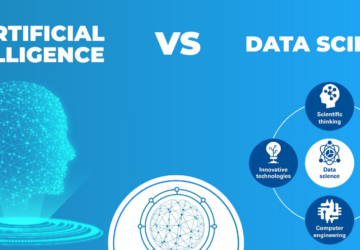In a dynamic world, expectations are high. Now users are demanding more than just loading speed. Magento vs Shopify are both modern e-commerce solutions.
Despite each platform offering distinct advantages, out of the box platforms are not optimized and there are real performance gains to make.
In this blog, we’ll uncover some key tips to propel Magento integrations into an e-commerce powerhouse for high-speed performance. This exploration will pave the way for elevated conversion rates and an enhanced shopping experience.
Insights into Magento Open-Source E-Commerce platform
Google & Bing now prioritize optimized websites over others and that trend will only increase over time. An optimized website helps you grow your business and stand above the masses of stores out there.
Why You Should Optimize Your Magento Website?
Optimizing your Magento website with the help of robust Magento development services is a crucial undertaking for several compelling reasons.
- Enhanced User Experience: A responsive website increases user satisfaction and engagement.
- Improved Search Engine Rankings: An optimized Magento website ensures a modern user journey across your store while attracting more customers without investing more in advertising.
- Increased Conversion Rates: A website with efficient magento integrations & navigation provides the best user experience, which contributes to boosting conversion rates.
- Competitive Advantage: A well-optimized Magento website loads quickly and offers a smooth experience that attracts and retains customers.
- Mobile Responsiveness: A responsive Magento website ensures that your website functions seamlessly across various screen sizes.
- Better Analytics and Tracking: Optimized websites provide more accurate data for analytics and tracking.
- User Retention: An optimized website reduces bounce rates and increases the likelihood of repeat website visits.
- Scalability: An optimized Magento website is scalable for handling increased demand during periods of heightened user activity.
Tips for Optimal Performance of Your Magento E-commerce Site
An optimized Magento website ensures faster load times. It contributes to improved user satisfaction, higher conversion rates, and enhanced search engine rankings.
We will go over the key tips to get more out of your Magento e-commerce site.
Choose a Reliable Hosting Provider
Magento developers will recommend a provider specializing in Magento hosting, offering dedicated support while ensuring stability and performance. Consider factors such as cloud infrastructure and the availability of a content delivery network (CDN) for efficient access to the store from any location in the world. Your hosting provider is the foundation of your e-commerce site, therefore selecting a reputable and trusted one is vital.
Implement Full-Page Caching
Utilize Magento’s built-in caching mechanisms to enable full-page caching. By storing complete page outputs, you can reduce the need for repetitive database queries, which can significantly improve load times for returning visitors.
Optimize Images and Media Files
Large media files are a major bottleneck for website speed. Compress images without compromising quality, leverage lazy loading to defer offscreen images, and consider using responsive images to enhance performance across various devices.
Enable Flat Catalogs
Magento’s default structure employs the Entity Attribute Value (EAV) model, which can slow down database queries. Enabling Flat Catalogs simplifies the database structure. It reduces query complexity and enhances performance, particularly for stores with an extensive product catalog.
Minimize HTTP Requests
Each HTTP request adds to the load time of your website. The developers should reduce the number of requests by combining CSS and JavaScript files and limiting external scripts. Magento provides tools to merge and minimize these files for improved performance.
Leverage Browser Caching
Configure your server to enable browser caching for static files. It allows returning visitors to retrieve files locally and reduces the need to download them again, which contributes to faster page loads.
Implement Content Delivery Network (CDN)
Integrate a CDN into your Magento site to distribute static assets across servers worldwide. It minimizes latency and ensures consistent, fast load times for users, regardless of the geographical location.
Regularly Update and Optimize Magento
Stay updated with the latest Magento updates & Magento integrations, as newer versions often include performance improvements. Regularly optimize your database by cleaning up unnecessary data, such as log files, to maintain peak performance.
Monitor and Analyze Performance
Utilize performance monitoring tools to regularly assess your Magento site’s speed and responsiveness. You can identify and address bottlenecks promptly to ensure optimal performance under varying traffic conditions.
Consider Third-Party Extensions Wisely
Evaluate each extension’s impact on site speed before integration. Poorly coded or unnecessary extensions can negatively impact performance.
Conclusion
Optimizing Magento website performance requires a strategic approach, regular monitoring and efficient Magento developers. By implementing these tips into your Magento store, you can create a faster, more responsive e-commerce site that not only meets but exceeds customer expectations.
A well-optimized store improves the shopping experience while considering the maintenance and health aspect of your store. Ultimately leading to the success of your business.
Read More







